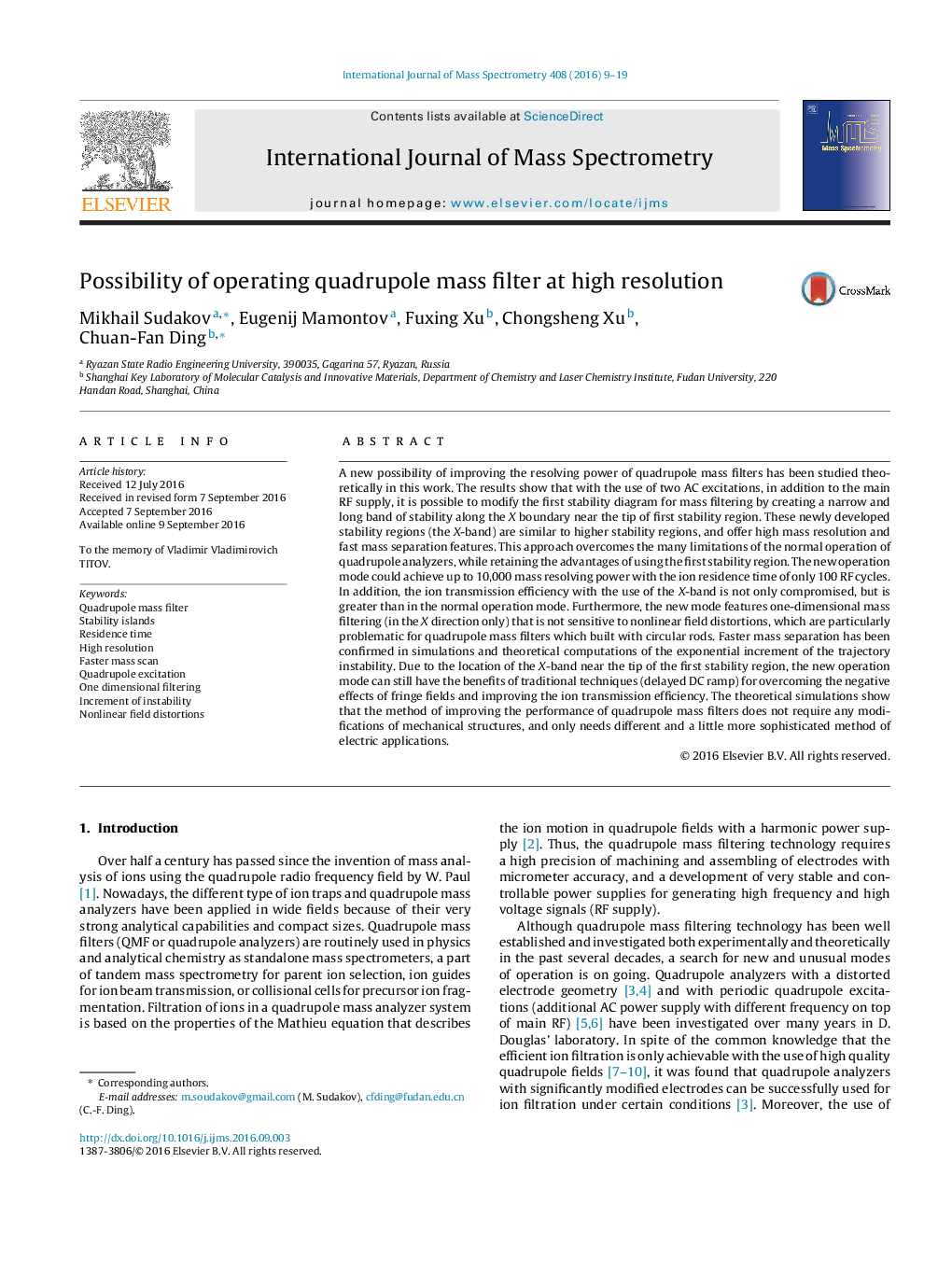| Article ID | Journal | Published Year | Pages | File Type |
|---|---|---|---|---|
| 5134323 | International Journal of Mass Spectrometry | 2016 | 11 Pages |
⿢Faster mass separation is obtained with the use of stability islands of special shape (Xband) formed by two AC excitations. Only few cycles of the base AC excitation frequency ν is sufficient to eject unstable ions and it possible to obtain about 10000 mass resolution with ion residence time of only 100 RF cycles.⿢Mass separation of ions happens in only one direction which increases acceptance of the mass filter.⿢The instability bands which are used for mass separation appear only in the vicinity of the upper tip of the first stability region, so it possible to use the delayed DC ramp technique to improve signal sensitivity.⿢The operation with the use of additional AC excitations is not sensitive to many nonlinear field distortions. So the new method might be applied to quadrupole analyzers with lower mechanical accuracy for improving their mass resolving power.
A new possibility of improving the resolving power of quadrupole mass filters has been studied theoretically in this work. The results show that with the use of two AC excitations, in addition to the main RF supply, it is possible to modify the first stability diagram for mass filtering by creating a narrow and long band of stability along the X boundary near the tip of first stability region. These newly developed stability regions (the X-band) are similar to higher stability regions, and offer high mass resolution and fast mass separation features. This approach overcomes the many limitations of the normal operation of quadrupole analyzers, while retaining the advantages of using the first stability region. The new operation mode could achieve up to 10,000 mass resolving power with the ion residence time of only 100 RF cycles. In addition, the ion transmission efficiency with the use of the X-band is not only compromised, but is greater than in the normal operation mode. Furthermore, the new mode features one-dimensional mass filtering (in the X direction only) that is not sensitive to nonlinear field distortions, which are particularly problematic for quadrupole mass filters which built with circular rods. Faster mass separation has been confirmed in simulations and theoretical computations of the exponential increment of the trajectory instability. Due to the location of the X-band near the tip of the first stability region, the new operation mode can still have the benefits of traditional techniques (delayed DC ramp) for overcoming the negative effects of fringe fields and improving the ion transmission efficiency. The theoretical simulations show that the method of improving the performance of quadrupole mass filters does not require any modifications of mechanical structures, and only needs different and a little more sophisticated method of electric applications.
Graphical abstractDownload high-res image (142KB)Download full-size image
